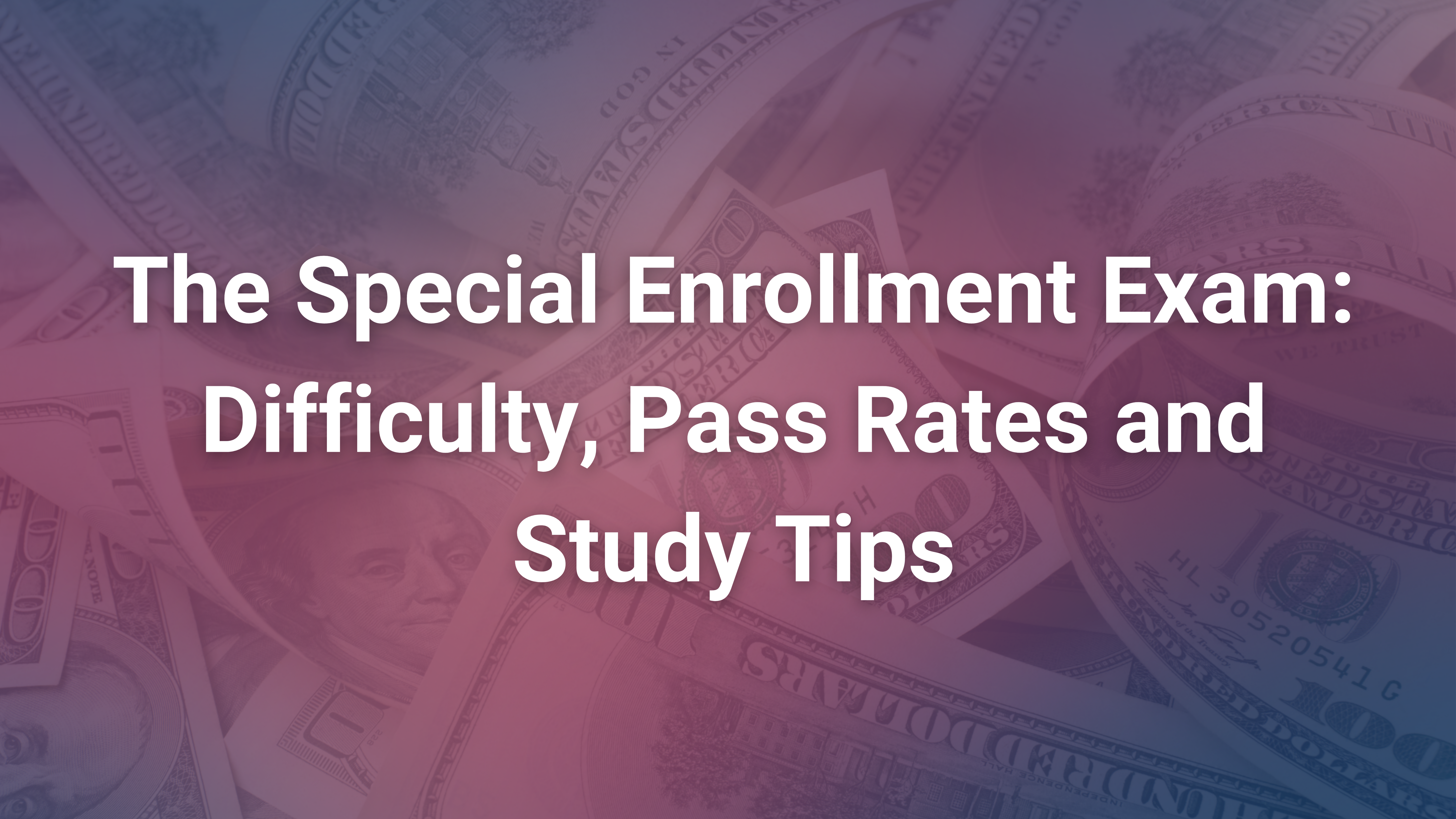The Special Enrollment Examination (SEE) – commonly known as the Enrolled Agent (EA) exam – is what stands between you and fellow tax professionals seeking the prestigious Enrolled Agent designation.
The EA credential allows practitioners to represent taxpayers before the Internal Revenue Service (IRS) and signifies mastery in knowledge of U.S. taxation laws and protocols.
But just how hard is the EA exam? And what is the best way to study for it?
All About the Exam
The SEE is comprised of three separate sections:
- Part 1: Individuals
- Part 2: Businesses
- Part 3: Representation, Practices, and Procedures
Each section is intended to test a candidate’s understanding and application of tax laws and regulations pertinent to the section’s theme. The questions are often scenario-based, requiring both memorization and an analytical grasp of tax principles.
The SEE is administered by a private company called Prometric. You can schedule your exam online to be taken at your nearest testing center, usually located in major metro areas. There is a fee of $206 per part to take the test. The exams are available from May 1 to February 28 each year. Each exam part may be taken four times per testing window.
Enrolled Agent Exam Pass Rates
The IRS does not publicly release official pass rates for the EA exam, but through data gathered from various sources, including study program providers and test-takers, we have some key insights:
- Part 1 (Individuals): Pass rates hover around 60-75%. This section is the “easiest” of the test, usually because individuals have a strong familiarity in individual taxation, as a taxpayer and tax professional.
- Part 2 (Businesses): This section tends to have a slightly lower pass rate, often between 50-65%. Business taxation can be more complex, and candidates must understand various small differences in tax law, from sole proprietorships to corporations.
- Part 3 (Representation, Practices, and Procedures): The pass rate for this section varies, but it generally falls between 55-70%. This section doesn’t focus on tax law, but it requires knowledge of EA roles, ethics, and the client representation process.
We need to remember that these pass rates are not static and can definitely vary year-to-year based on the cohort of candidates and potential adjustments to the exam’s difficulty, so take this with a grain of salt.
How to Long to Study for the Enrolled Agent Exam
I don’t know your specific prior knowledge, experience, or study habits, so this can vary, but here’s a sample study schedule that will set you up for success:
- Part 1 (Individuals): 50-70 hours. You’re probably most comfortable with this section without doing any studying, but everyone will need to do a comprehensive review regardless of experience level.
- Part 2 (Businesses): 60-80 hours. Given the intricacies of business tax issues and the breadth of entities covered, you will need more study time for this section. Plan for it.
- Part 3 (Representation, Practices, and Procedures): 40-60 hours. This section is more about understanding ethics practices and memorizing procedures.
For all three sections, you’re looking at a total of around 150 to 210 hours of study for the EA exam. Even a seasoned tax professional will need to study; you can’t waltz into the exam with no preparation and expect to pass. Make a plan to study.
More Tips for Success
1. Consistency Headspace: Don’t cram! Schedule specific times for study each day or week. Regular exposure helps reinforce concepts. Make it into a habit that sticks.
2. Practice Exams: I highly recommend that you use these to gauge your readiness and to familiarize yourself with the exam’s format. Practice exams are an invaluable resource that will tell you what areas need more focus.
3. Study Groups: While not for everyone, consider seeking out a SEE study group. Discussing topics with others in the same boat can give you different perspectives and clarification on tricky concepts. They can also hold you accountable for putting those study hours in.
4. Stay Current: Tax laws change often. Before you pick up that used study book you found at Goodwill, ensure that your study materials are current and check the IRS website for any recent updates.
5. Test-Taking Strategies: This is a basic test-taking skill for success, but you need to learn how to manage your time during the exam and develop proven strategies for handling questions you’re unsure about. Learning these basic test-taking strategies can mean the difference between passing and failing the SEE, or any other test for that matter.
The Enrolled Agent exam is definitely a challenging exam, and it reflects the rigorous standards of the tax profession. However, with the right preparation strategy, dedication, and mindset, success is entirely attainable. Achieving the EA designation is a significant professional milestone and well worth the effort and time invested in preparing for the exam.
